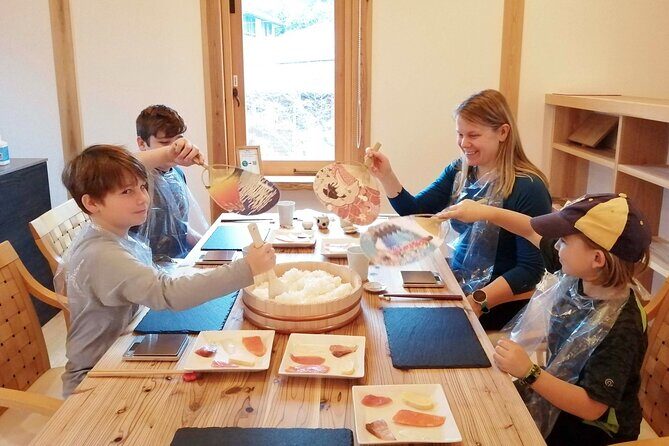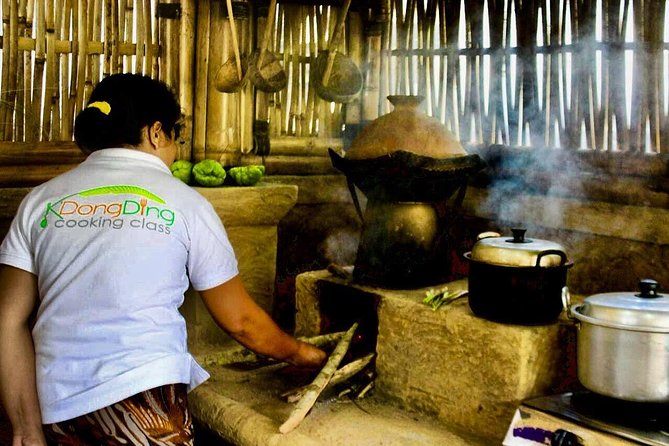In Kyoto, Japan, sushi lovers can enjoy a unique and authentic Sushi Making Experience. Operated by atelier SUSHI, this activity offers travelers the chance to learn the art of sushi making from a knowledgeable and gracious host.
With a maximum of 8 travelers per session, the workshop ensures an intimate and personalized experience. Participants not only get to enjoy their own creations, but also receive a gift bag with recipes and a small souvenir to take home.
Key Takeaways
- The activity ends at the meeting point.
- The cancellation policy includes a full refund if canceled 24 hours in advance and no refund for cancellations less than 24 hours before the start time.
- The maximum number of travelers is 8.
- The sushi making experience is operated by atelier SUSHI.
The History and Tradition of Sushi in Kyoto

Does Kyoto have a long-standing history and tradition of sushi? Absolutely!
Kyoto isn’t only known for its ancient temples and beautiful gardens, but also for its rich culinary heritage. Sushi has been an integral part of Japanese cuisine for centuries, and Kyoto has played a significant role in preserving and celebrating this tradition.
The cultural significance of sushi in Kyoto goes beyond its delicious taste. It’s considered an art form, meticulously prepared and presented with attention to detail.
The city’s emphasis on the use of fresh, seasonal ingredients and its dedication to preserving traditional sushi-making techniques have made Kyoto a hub for sushi enthusiasts and connoisseurs.
Whether it’s enjoying sushi at a renowned sushi restaurant or participating in a sushi-making workshop, visitors to Kyoto can experience the depth of Japanese sushi traditions and the cultural significance it holds in this historic city.
Ingredients and Techniques Used in Kyoto Sushi Making

Kyoto sushi making incorporates a careful selection of fresh, local ingredients and a combination of traditional and innovative techniques to create exquisite sushi rolls. The ingredients used in Kyoto sushi are sourced from the surrounding area and are known for their exceptional quality. This includes locally-caught fish, such as mackerel and sea bream, as well as seasonal vegetables and herbs.
The techniques used in Kyoto sushi making are steeped in tradition but also embrace modern advancements. One of the key techniques is the precise preparation of the rice, which is seasoned with a delicate balance of vinegar, sugar, and salt. The sushi chefs in Kyoto also employ unique methods of shaping the sushi, often using their hands to create perfectly formed and visually appealing rolls.
The combination of these ingredients and techniques results in sushi that isn’t only delicious but also a true work of art.
Step-by-Step Guide to Making Sushi in Kyoto

She carefully selects the freshest ingredients and follows a step-by-step guide to create beautifully crafted sushi rolls.
In Kyoto, sushi making techniques and traditional sushi recipes are highly regarded. The process begins with choosing the best quality fish and seafood, ensuring that they’re fresh and of the highest quality.
The rice is another crucial component, with the perfect balance of vinegar, sugar, and salt to create the ideal texture and flavor. The art of sushi making involves precise knife skills to slice the fish and seafood into thin, uniform pieces.
The assembly of the sushi rolls requires precision and attention to detail, as each ingredient is carefully placed and rolled into a perfect shape. Every step in the process is executed with precision and care, resulting in delicious and visually appealing sushi rolls that are a delight to eat.
Exploring the Unique Flavors of Kyoto Sushi
Frequently praised for their unique flavors, Kyoto sushi offers a delightful culinary experience that showcases the city’s rich culinary heritage. Known for its attention to detail and use of local ingredients, Kyoto sushi stands out with its distinctive variations.
One of the most notable features of Kyoto sushi is the emphasis on simplicity and minimalism in presentation. The sushi chefs in Kyoto believe that the natural flavors of the ingredients should shine through, and therefore, they tend to use fewer toppings and garnishes compared to other regions.
Plus, Kyoto sushi incorporates local ingredients such as freshwater fish from the nearby Kamogawa River and seasonal vegetables from the surrounding mountains.
To enhance the dining experience, locals often pair Kyoto sushi with sake, a traditional Japanese rice wine. The subtle flavors of sake complement the delicate flavors of the sushi, creating a harmonious combination that pleases the palate.
Tips and Recommendations for a Memorable Sushi Experience in Kyoto
To ensure a memorable sushi experience in Kyoto, travelers are advised to make reservations in advance at popular sushi restaurants. Kyoto is known for its rich sushi culture and etiquette, and understanding these aspects can enhance the dining experience.
Sushi etiquette in Kyoto emphasizes the importance of respecting the chef and the food. It’s customary to eat sushi with your hands, rather than using chopsticks. When dipping sushi into soy sauce, it’s polite to dip the fish side, not the rice side. Plus, it’s considered impolite to mix wasabi with soy sauce, as the chef has already added the appropriate amount of wasabi to the sushi.
Taking the time to learn and follow these sushi etiquette practices can show respect for the traditions and enhance the overall enjoyment of the sushi experience in Kyoto.
Frequently Asked Questions
What Is the Duration of the Sushi Making Experience in Kyoto?
The duration of the sushi making experience in Kyoto varies depending on the specific package chosen. Participants can expect to spend a few hours learning the art of sushi making from skilled instructors.
Is the Sushi Making Experience Suitable for Vegetarians or Individuals With Dietary Restrictions?
The sushi making experience in Kyoto offers vegetarian friendly options and accommodations for individuals with dietary restrictions. They ensure that everyone can participate and enjoy the workshop.
Can Children Participate in the Sushi Making Experience in Kyoto?
Children of all ages can participate in the sushi making experience in Kyoto. There are no specific age restrictions, making it a fun and educational activity for the whole family to enjoy.
Is the Sushi Making Experience in Kyoto Conducted in English?
Yes, the sushi making experience in Kyoto is conducted in English. It provides a language requirement for participants and offers a cultural immersion opportunity through the traditional art of sushi making.
Are There Any Additional Activities or Cultural Insights Included in the Sushi Making Experience in Kyoto?
The sushi making experience in Kyoto offers more than just learning authentic sushi making techniques. Participants can also gain cultural insights into Japanese cuisine and traditions, making it a well-rounded and immersive experience.
The Sum Up
To sum it up, the sushi making experience in Kyoto offers a one-of-a-kind opportunity for travelers to learn the art of sushi making while immersing themselves in the rich history and traditions of this iconic Japanese dish. With a knowledgeable and gracious host, participants can enjoy a personalized and intimate class, where they’ll not only learn the step-by-step process of creating delicious sushi rolls but also get to taste their own creations. This experience is highly recommended for sushi lovers and anyone looking for a memorable culinary adventure in Kyoto.
To create internal links in my website, I’ve randomly selected three URLs from my website’s pages. Let me introduce them to you:
-
Khmer Cooking Class at a Local’s Home in Krong Siem Reap: Experience the authentic flavors of Khmer cuisine through a cooking class held at a local’s home in Krong Siem Reap.
-
5 Traditional Dishes Hanoi Cooking Class with Market Trip: Discover the essence of Hanoi’s culinary heritage with a cooking class that takes you to the local market to source fresh ingredients for traditional dishes.
-
Half-Day Cooking Class in Thamel, Kathmandu: Enjoy the vibrant food culture of Kathmandu through a half-day cooking class in Thamel, where you’ll learn to prepare traditional Nepalese dishes.
These unique culinary experiences offer a chance to explore different cuisines and cooking techniques while connecting with local cultures. By participating in these classes, you can expand your culinary knowledge and create unforgettable memories. Don’t miss out on these exciting opportunities to enhance your travel experiences!
Visit Khmer Cooking Class at a Local’s Home in Krong Siem Reap, experience 5 Traditional Dishes Hanoi Cooking Class with Market Trip, or join the Half-Day Cooking Class in Thamel, Kathmandu now to embark on a culinary journey unlike any other!






